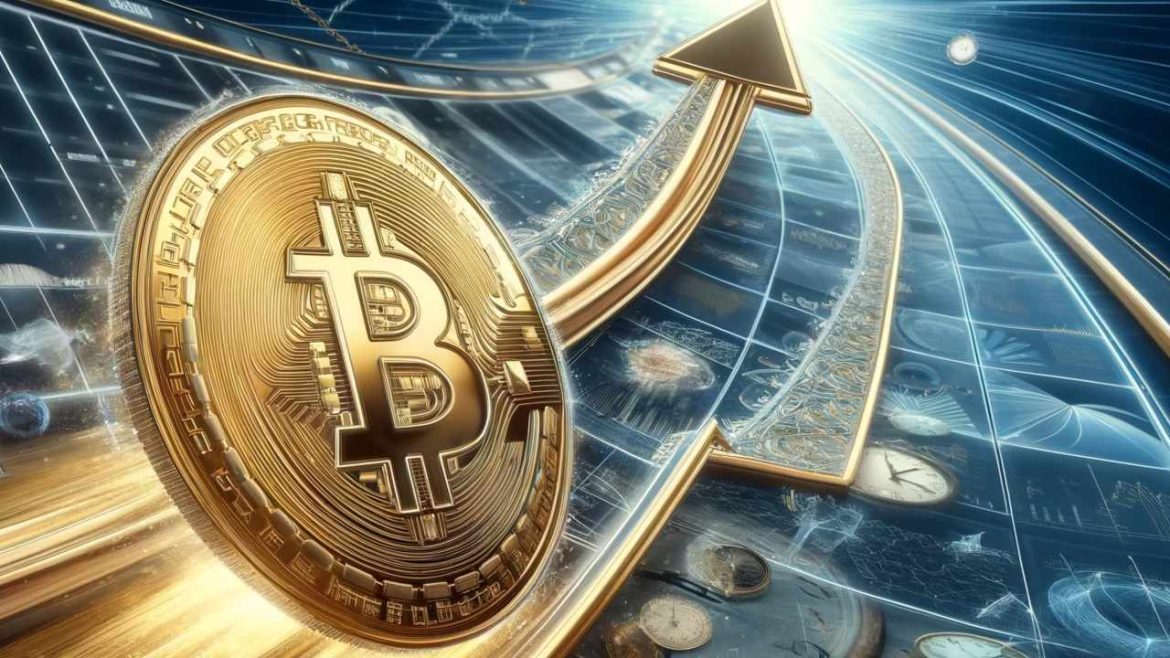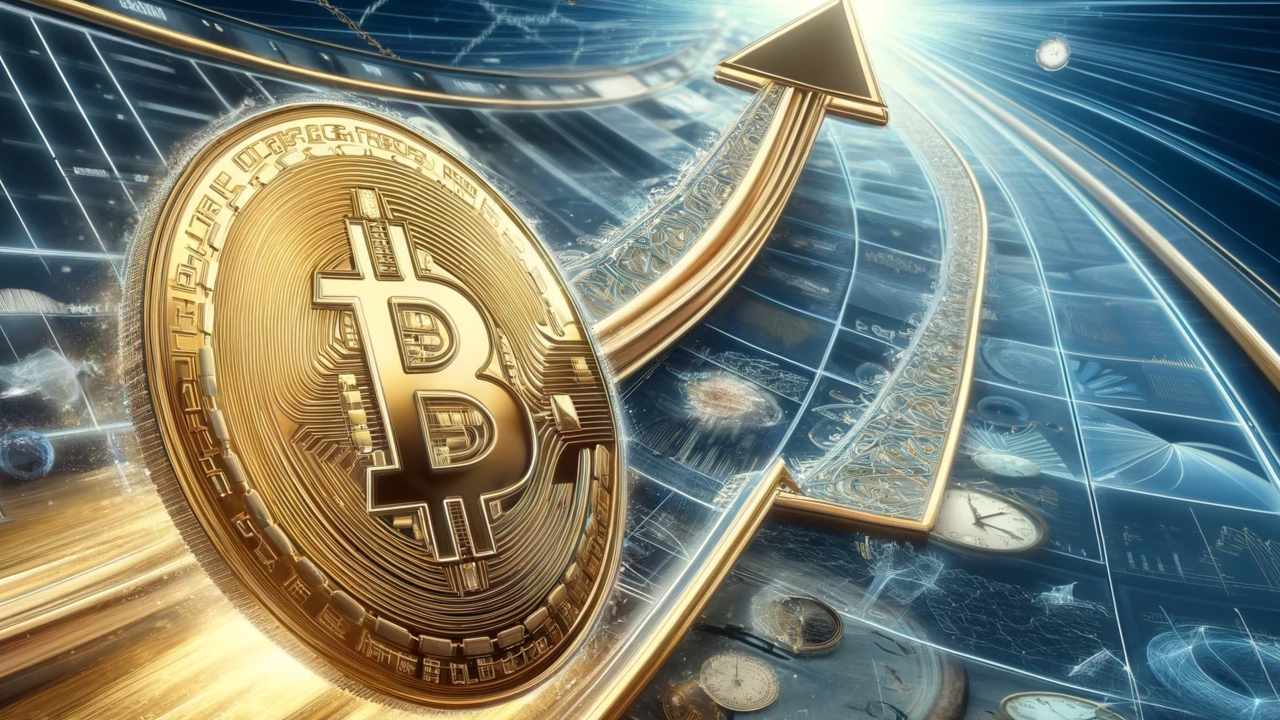The global financial landscape is increasingly characterized by mounting debt levels, with governments, corporations, and individuals accumulating liabilities at an unprecedented pace. The total global debt has surpassed $315 trillion, a figure that dwarfs the world’s gross domestic product (GDP). This alarming trend has prompted concerns about a potential debt crisis that could destabilize economies worldwide. Amid this backdrop, Robert Kiyosaki, the renowned author of *Rich Dad Poor Dad*, has emerged as a vocal advocate for alternative assets, particularly Bitcoin, gold, and silver, as safeguards against the impending financial turmoil.
Kiyosaki’s perspective is rooted in the belief that traditional financial instruments, such as fiat currencies and bonds, are vulnerable to the erosion of value caused by inflation, currency debasement, and monetary policy interventions. He argues that these assets, which he refers to as “fake fiat money,” will lose significant value when the debt bubble bursts. In contrast, he posits that tangible and scarce assets, like gold, silver, and Bitcoin, can serve as effective hedges against economic collapse.
The Global Debt Bubble: A Ticking Time Bomb
The global debt bubble is a complex and multifaceted issue that has been building for decades. Governments have relied on borrowing to fund infrastructure, social programs, and economic stimulus packages, while corporations have leveraged debt to finance expansion and innovation. Consumers, too, have taken on significant debt to purchase homes, education, and other necessities. The cumulative effect of this borrowing has created a fragile financial system that is susceptible to shocks.
Kiyosaki warns that the current debt levels are unsustainable and that a sudden deleveraging or default cascade could trigger a profound financial crisis. He points to historical precedents, such as the 2008 financial crisis, to illustrate the potential severity of such an event. In his view, the only way to protect wealth in such a scenario is to hold assets that are not tied to the traditional financial system.
Bitcoin, Gold, and Silver: The New Safe Havens
Kiyosaki’s recommendations are based on the idea that tangible or scarce assets can serve as effective hedges against monetary debasement and economic collapse. He identifies three key assets that he believes will preserve and even grow wealth in the face of a debt crisis: gold, silver, and Bitcoin.
– Gold and Silver: These precious metals have long been considered safe havens during times of economic uncertainty. Their physical nature and limited supply give them intrinsic worth that is trusted worldwide. Kiyosaki argues that gold and silver will retain their value even as fiat currencies lose purchasing power.
– Bitcoin: Positioned as “digital gold,” Bitcoin embodies scarcity through its fixed 21 million coin supply. Its decentralized and censorship-resistant qualities further enhance its appeal as a store of value independent of government control. Kiyosaki elevates Bitcoin beyond a mere speculative asset, advocating for its critical role in wealth protection.
Kiyosaki’s bullish stance on Bitcoin is not without merit. The cryptocurrency has demonstrated remarkable resilience and growth since its inception, attracting a growing number of institutional investors and retail traders. Its decentralized nature and limited supply make it an attractive alternative to traditional financial instruments, particularly in an era of unprecedented monetary expansion.
Kiyosaki’s Price Predictions and Investment Timing
Despite acknowledging Bitcoin’s infamous short-term volatility, Kiyosaki remains aggressively bullish. He forecasts that Bitcoin will hit $200,000 by 2025 and potentially soar to $1 million by 2030. His call is not merely about capitalizing on price appreciation but about “being richer” post-collapse. Those who hold Bitcoin, gold, and silver when the debt bubble bursts are poised to preserve and multiply wealth, whereas those clinging to fiat and bonds risk devastating losses.
Kiyosaki also advises “buying the dip,” recognizing that market corrections and volatility can present advantageous entry points for disciplined investors. His call reflects a contrarian mindset, encouraging confidence in alternative assets even amid panic selling and market uncertainty. This approach requires a high tolerance for risk and a long-term perspective, as short-term fluctuations can be significant.
Implications for Investors and the Broader Economy
Kiyosaki’s warnings resonate beyond speculative interest. They underscore critical questions about global financial stability, monetary policy efficacy, and asset allocation in uncertain environments. Investors face dilemmas:
– Maintaining faith in traditional safe assets that may erode in value under hyperinflation.
– Navigating volatile cryptocurrencies while grappling with regulatory uncertainties and market sentiment swings.
– Timing exits and entries to avoid catastrophic losses while positioning for long-term gains.
Kiyosaki urges rejecting complacency, advocating proactive shifts away from fiat assets toward tangible and decentralized forms of wealth preservation. This shift requires a fundamental rethinking of investment strategies and a willingness to embrace new and untested asset classes.
Potential Risks and Criticisms
While Kiyosaki’s perspective offers a compelling narrative, it is essential to approach such forecasts with critical analysis. Several factors could undermine his predictions:
– Market Speculation: Bitcoin’s prices are influenced by multifaceted factors, including regulation, technological adoption, macroeconomic shifts, and market sentiment. Predicting milestones such as $1 million per Bitcoin by 2030 carries significant uncertainty.
– Volatility and Accessibility: Cryptocurrency markets remain more volatile than traditional asset classes. Investors unprepared for sharp price swings may face psychological and financial stress.
– Contrarian Views: Some analysts argue that while debt levels are high, innovative policy measures or economic growth may mitigate catastrophic outcomes. They contend that central banks and governments have the tools to manage debt levels and prevent a full-blown crisis.
Despite these caveats, Kiyosaki’s focus on tangible hedges aligns with broader concerns about fiat currency vulnerabilities in periods of extreme fiscal stress. His advocacy for Bitcoin, gold, and silver reflects a growing recognition of the limitations of traditional financial instruments in an era of unprecedented debt and monetary expansion.
Conclusion: Preparing for an Uncertain Future
Robert Kiyosaki’s advocacy for Bitcoin, gold, and silver amid warnings of an unprecedented global debt bubble burst is a clarion call for investors to rethink conventional strategies. His projections of Bitcoin’s potential meteoric rise embody both risk and opportunity—a strategic hedge for those willing to brave volatility in pursuit of wealth preservation.
As financial systems strain under the weight of massive debt and monetary policies face limits, diversifying into alternative, scarce assets may provide a vital safeguard. Whether Kiyosaki’s dramatic forecasts fully materialize or serve chiefly as cautionary inspiration, the core message is clear: preparing thoughtfully and proactively amid financial uncertainty can differentiate those who endure and prosper from those who falter.
Understanding and acting on this call demands a combination of prudence, education, and courage—tools every investor must wield in navigating the turbulent markets ahead. In an era of unprecedented financial complexity and uncertainty, Kiyosaki’s insights offer a valuable framework for safeguarding wealth and securing a prosperous future.





